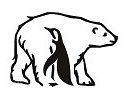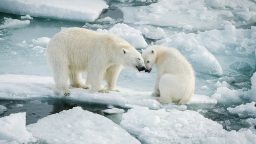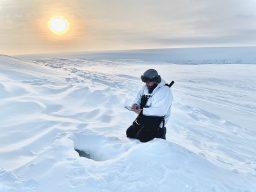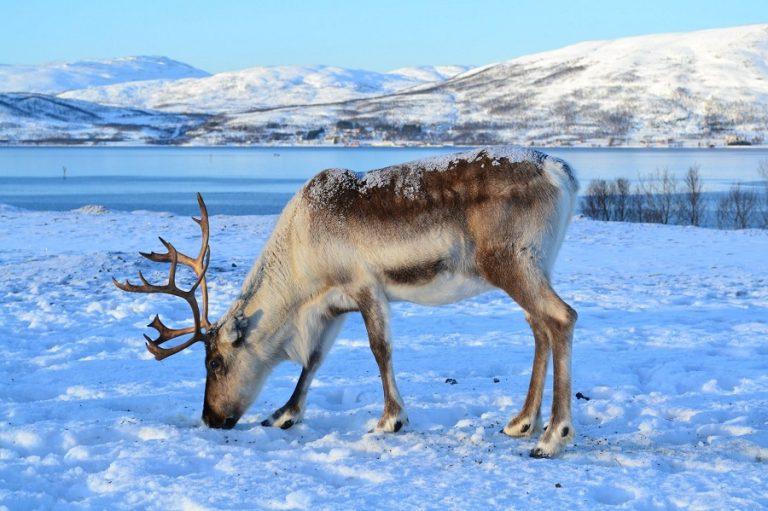
Northern deer. Photo: Tifen Degornet, Norway
The reindeer helped humans to explore the North in the distant past, and now remains the most important biological resource of some peoples of Eurasia and North America. Wild deer are the object of hunting. As a result of the domestication of the reindeer, reindeer husbandry arose, that is, the breeding of reindeer for meat, skins, milk and use as riding and pack transport.
- The reindeer is a book name
The common name of the reindeer in places where other types of deer are found is simply “deer”. Where reindeer husbandry is developed, a deer is usually called a domestic reindeer, and a wild reindeer is called a “savage”. Reindeer is the European name for this species, while in North America this species is known as caribou. - Horns are found not only in males, but also in females
Horns – the main decoration of the reindeer – are found not only in males (bulls), but also in females (vazhenki). This is how it differs from other deer species, in which the females are hornless. Horns grow and fall off every year: bulls shed them at the beginning of winter, after rutting, and vazhenki – only in spring, after calving. - It changes the sole of the hooves by winter
Reindeer hooves can vary depending on the time of the year. In summer, when the deer walks on the tundra, the sole of the hooves is spongy. By winter, the deer “changes the rubber”: the soft pads on the sole of the hooves tighten, exposing the sharp edge of the hoof – so as not to slip on the ice and better dig up the snow in search of food. - Has a special hairline
An important adaptation to living in a cold climate is the characteristic structure of the hair and thick hairline, which, combined with a thick layer of subcutaneous fat, provides reliable thermal insulation. In the skin of a deer, the hairs are hollow: the air contained inside and between them helps the animal not only to tolerate low temperatures, but also to swim perfectly. - The nose is completely covered with hair.
The nasal region of the reindeer has significant differences: it is much wider than that of red deer and other deer of southern latitudes. This change is due to the inhalation of cold air. Their noses are completely covered with fur to protect them from midges in summer and from the cold in winter. When foraging, deer often bury their noses in the snow. - In summer, the eyes are golden, and at polar night, they are blue.
Reindeer’s eyes change color depending on the season: in summer they are golden, and during the polar night they are blue. The reason is the tapetum– a special structure behind the retina that reflects incoming light, causing it to once again affect the retinal receptors. This increases the overall light sensitivity of the eye and helps the deer to see better in the dark.
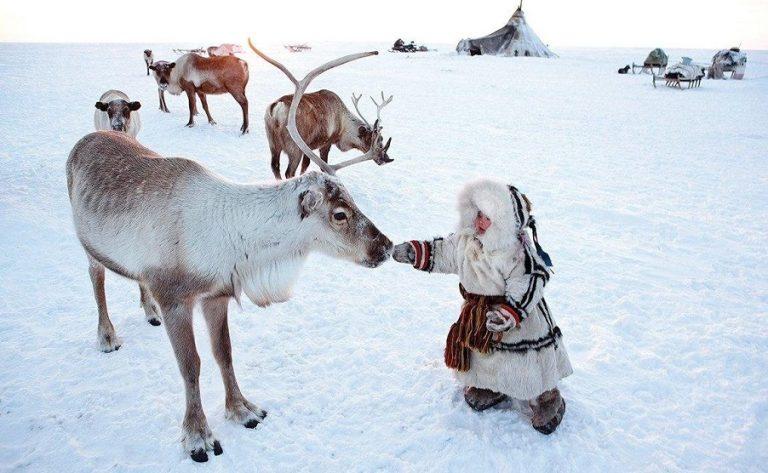
Photos from open sources
- Sees in ultraviolet rays
The reindeer is the only mammal capable of perceiving ultraviolet radiation in addition to visible light. He sees waves from 320 nanometers, which we perceive as black. Therefore, the reindeer recognizes important objects that absorb ultraviolet light and therefore appear black, contrasting strongly with snow: lichens are the main food source in winter, the fur of predators. - Favorite delicacy — mushrooms
The reindeer is an inhabitant of the northern regions: tundra and forest tundra. All its characteristic features represent adaptations to life in Arctic conditions, in a cold climate. Deer can eat not only lichens and mosses, but also leaves, mushrooms, berries; on occasion, they can eat bird eggs and even small animals. But deer’s favorite delicacy is mushrooms. - The hardiest land traveler
Reindeer, along with Arctic foxes, make the longest land migrations in the Arctic (up to a maximum of 5,000 km). Extreme movements of reindeer are caused by extreme seasonal variability, uneven distribution of key resources, their low primary productivity, and avoidance of predators. - A newborn is ready to go almost immediately.
The newborn calf is small and weak, its weight barely reaches 6 kg. But within a few minutes after being born, he is able to stand on his feet, after half an hour he can move independently, and after a few hours he can cover several kilometers. A few days after birth, his horns break through. The fawn stays with its mother for the first two years of life, until puberty. - Milk is extremely high in calories
Vazhenka’s milk is used to feed calves, favoring their rapid growth in a cold climate. Deer milk is characterized by an exceptionally high caloric content, it contains 4-5 times more fat and 3 times more protein than cow’s milk. The milk is thick, resembles cream, pleasant to the taste, somewhat tart. People drink with tea and salt. - The main predators are wolves.
Wild reindeer populations suffer the greatest natural damage from predators: wolves, wolverines, arctic foxes, and sometimes birds of prey that prey on calves. In different places, predators have different effects on populations. Much depends on the number of predators themselves, the abundance or lack of other prey, the nature of the snow cover, and other environmental factors.
By Marina Chebotaeva
